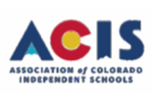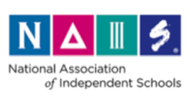In the week leading up to our departure for 11 days aboard the Irving Johnson, we dove into the academics of our ECS with a splash. As CSS students, we wanted to be prepared for our journey, so we studied various marine
On board the ship, we will be working in teams of 8 or 9 as we complete the daily tasks of sailing, varying from swabbing the decks to taking nighttime watches. We had the opportunity to divide into and work with these groups as we developed ten-minute lessons and our own, original sea shanties. In regular classes, our teachers strive to use hands-on and engaging techniques, so we attempted to incorporate some of these into our own lessons through interactive games and demonstrations.

After presenting these within our own ECS, we then presented the best ocean and teaching presentations to our little buddies in the Children’s School. In pairs, we explored some of the issues that our oceans face today including ocean warming, the Pacific Garbage Patch, and lasting effects of aquaculture. Through these projects, not only did we discover some of the most dire problems that affect our planet’s largest biome, but we also had the opportunity to work with the people with whom we are going to spend the next two weeks on 90 feet of ship. It was great to collaborate with students from different grades, allowing us to develop a stronger interconnectedness within the high school. They especially enjoyed learning how to tie some of the knots that we will use on the ship and playing a game that explained the fearsome lives of pirates. Our watch groups relished the opportunity to share such intriguing knowledge with the enthusiastic, younger CSS students.topics through presentations that we would then give to our fourth and fifth grade buddies.
In our groups, we also wrote sea shanties that we could use to keep rhythm performing tasks like hauling ropes while onboard the ship. We combined all of our creative minds to sculpt entertaining shanties that we shared with each other and hope to use on the ship. To prepare for ship life even further, we learned about the physics of floating objects through a buoyancy lab. Our experiments with styrofoam, clay, and weights in water allowed us to use our critical thinking and problem-solving skills to make things float and learn about density. We just hope that our boat stays afloat in California! Finally, we practiced swimming and snorkeling in a local pool because we hope to snorkel around the Channel Islands next week.
After this week of intense academics, we can’t wait to begin our voyage and set sail aboard the Irving Johnson next week. With our new skills and knowledge and strengthened teamwork, we are confident our trip will be even more meaningful.





